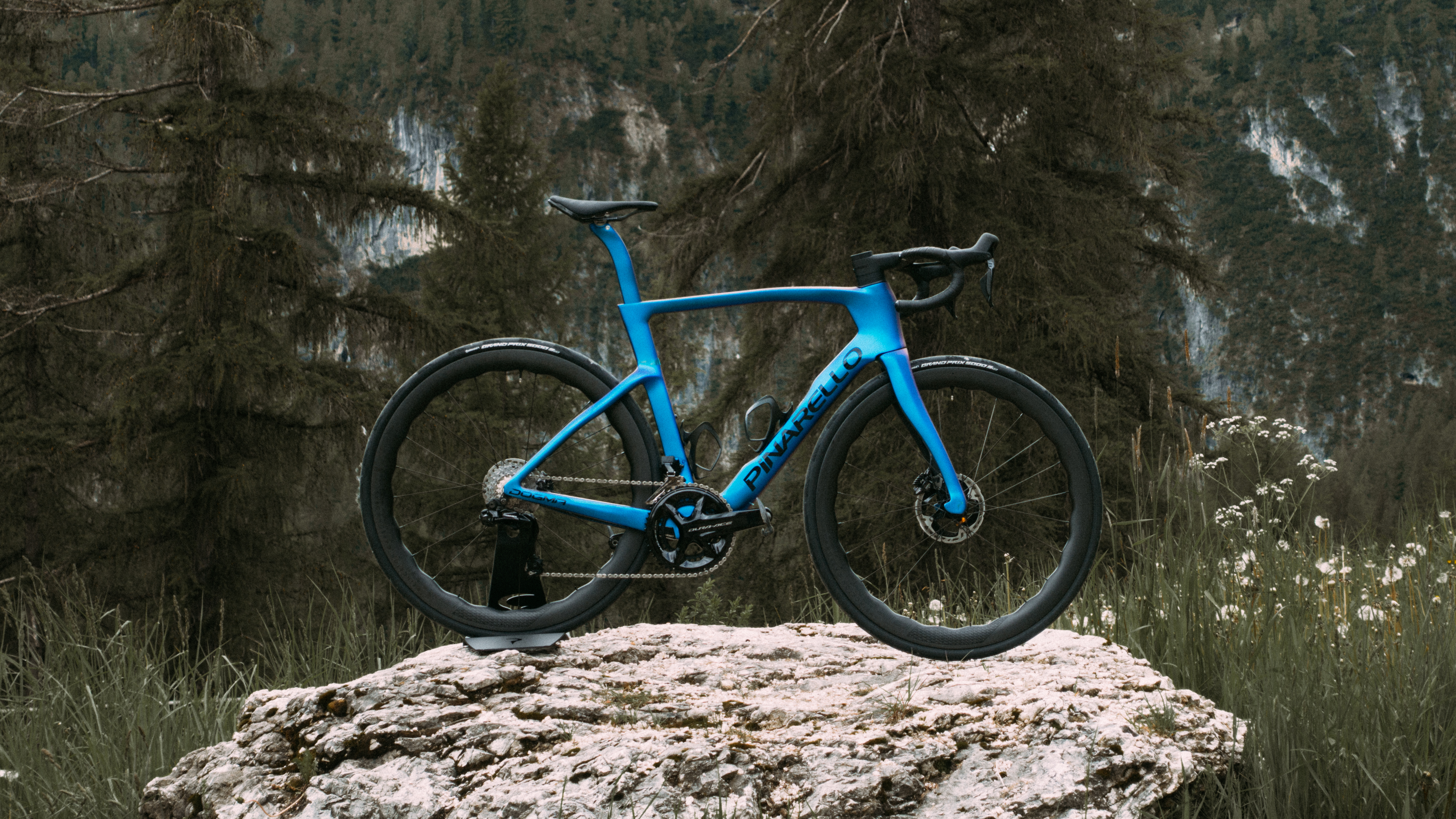
As per my reflections on the tech trends I expect to see ahead of the Tour de France I find myself yet again penning things in a departure lounge. Press launches are predominantly a chance for brands to show off their latest wares in a carefully crafted environment, and this is never more true than for a flagship bike. The outgoing Dogma F had been a bit of an outlier in its time insofar as it was a ‘one bike’ solution to Ineos Grenadiers' racing needs. Pinarello is quick to point out that other brands have decided to follow suit in recent times, but regardless of what everyone else is doing the new Dogma F takes over as a like-for-like single bike solution for climbing, aero, and Classics duties.
All the changes and the more technical aspects of the bike are detailed in our new Pinarello F launch story, but for those of you unwilling to get stuck in the weeds of carbon moduli, the headline figures are a 108g weight saving, 40g of which comes from a new cockpit, a 0.2% improvement in the drag coefficient, and an increased tyre clearance up to 30c. As we are increasingly seeing, the changes to bike models are becoming ever more iterative and marginal.
The commenterati across social media were quick to point out that “it looks just like the old one”, and I think visually it’s a stretch to say it’s a drastic departure, but as I noted when I went to the launch of the new Pinarello F7, the brand has an eye on aesthetics almost in parallel with performance, and the distinctive silhouette is something of a trademark, so you can hardly blame the Italian brand for wanting to keep things recognisable.
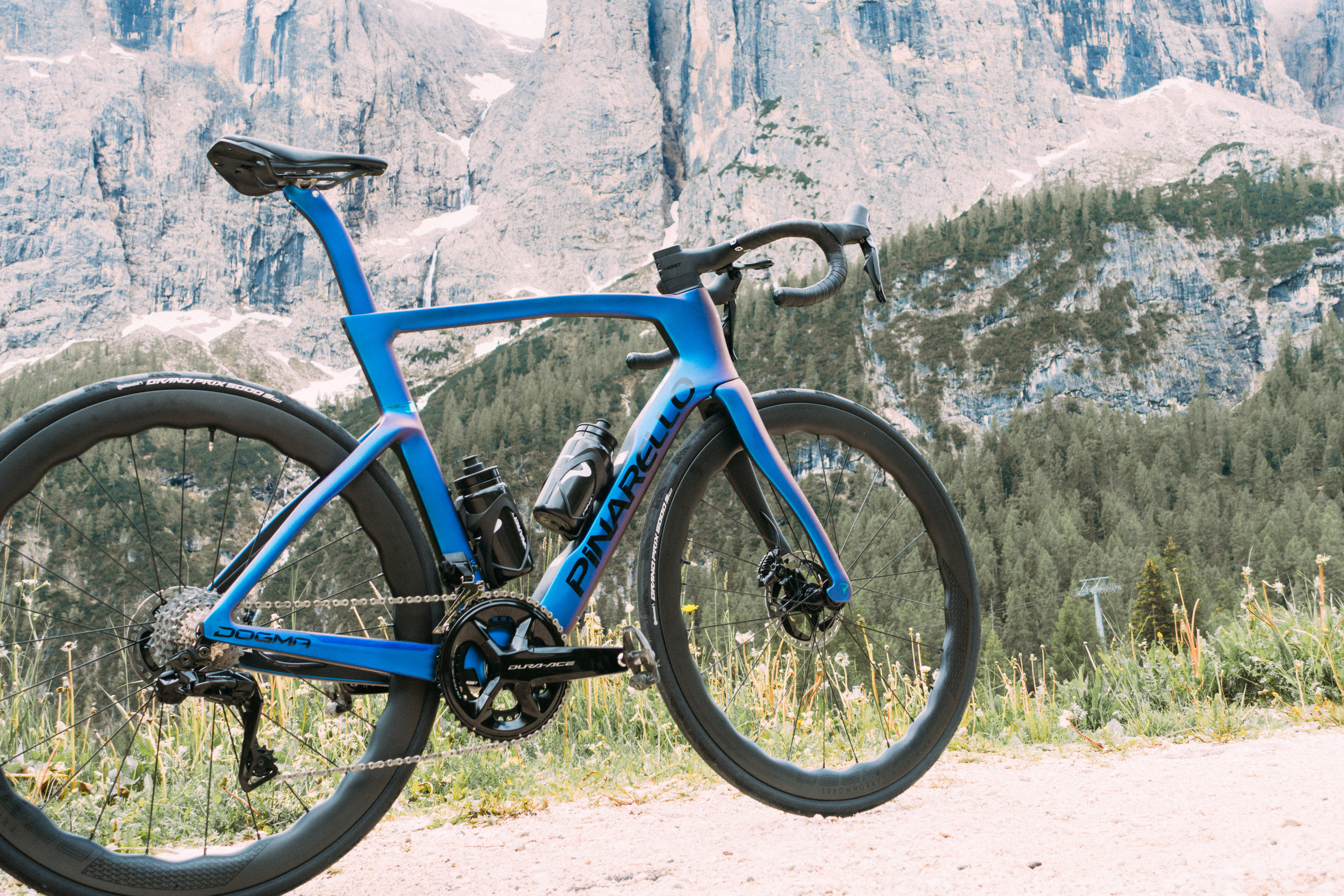
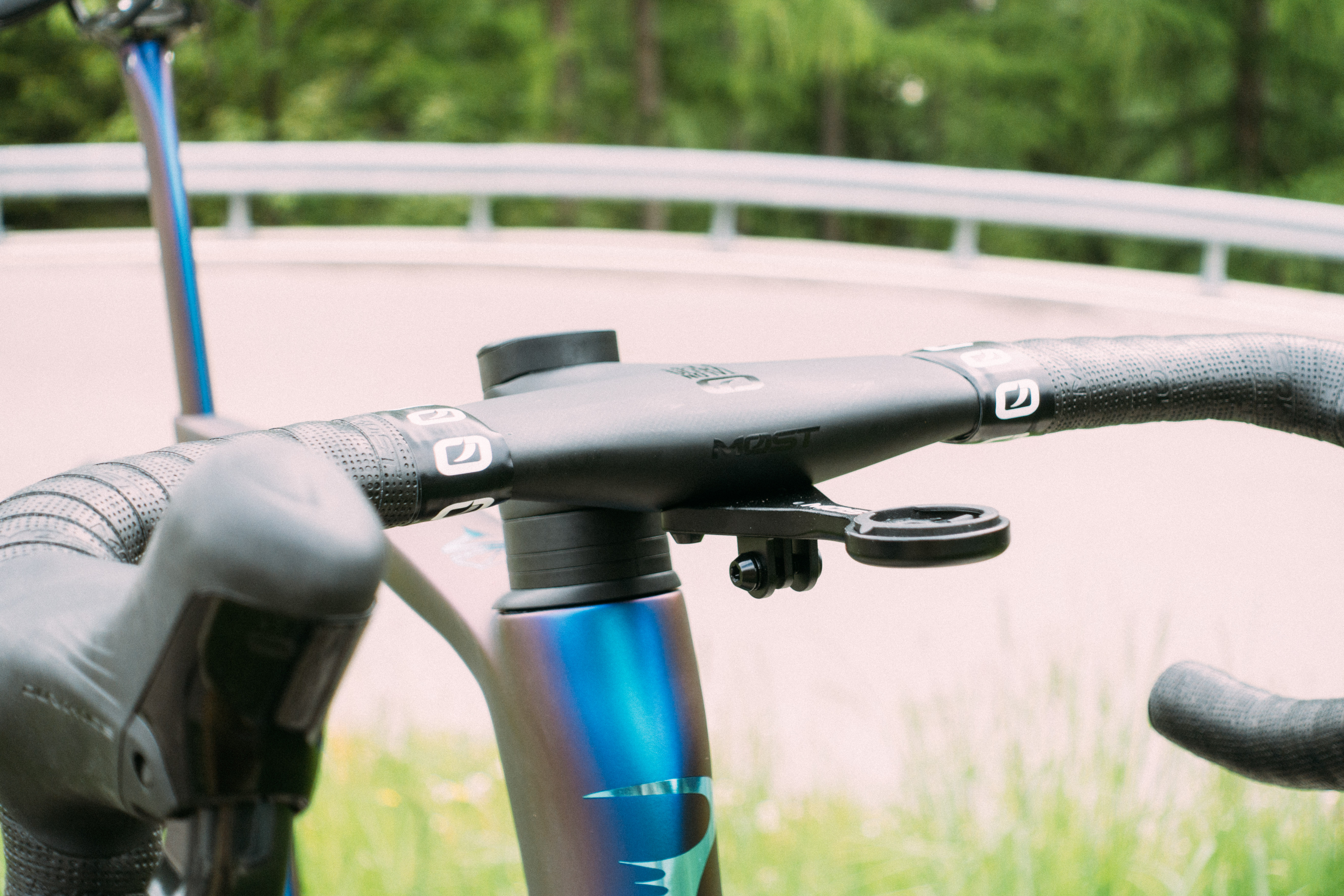
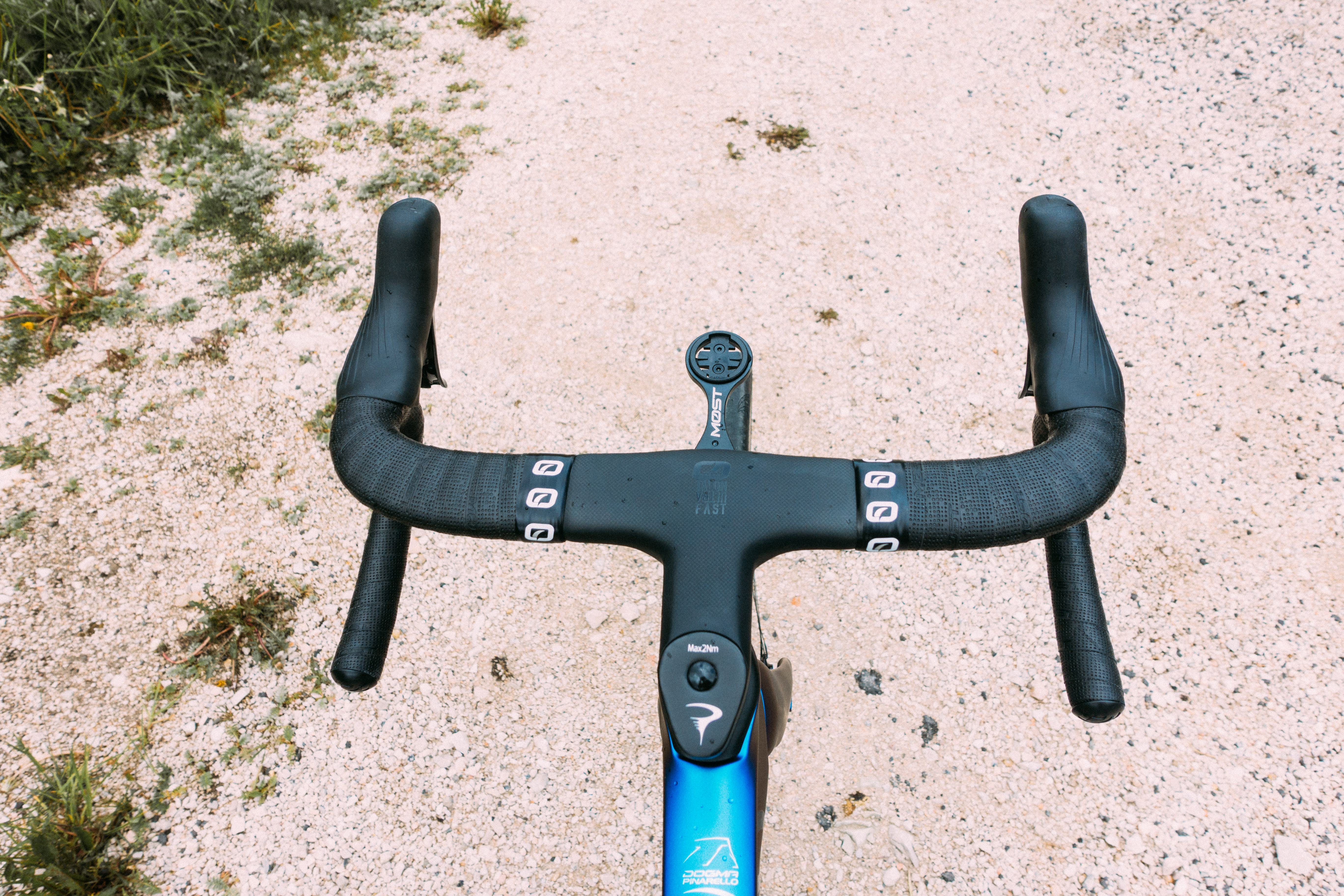
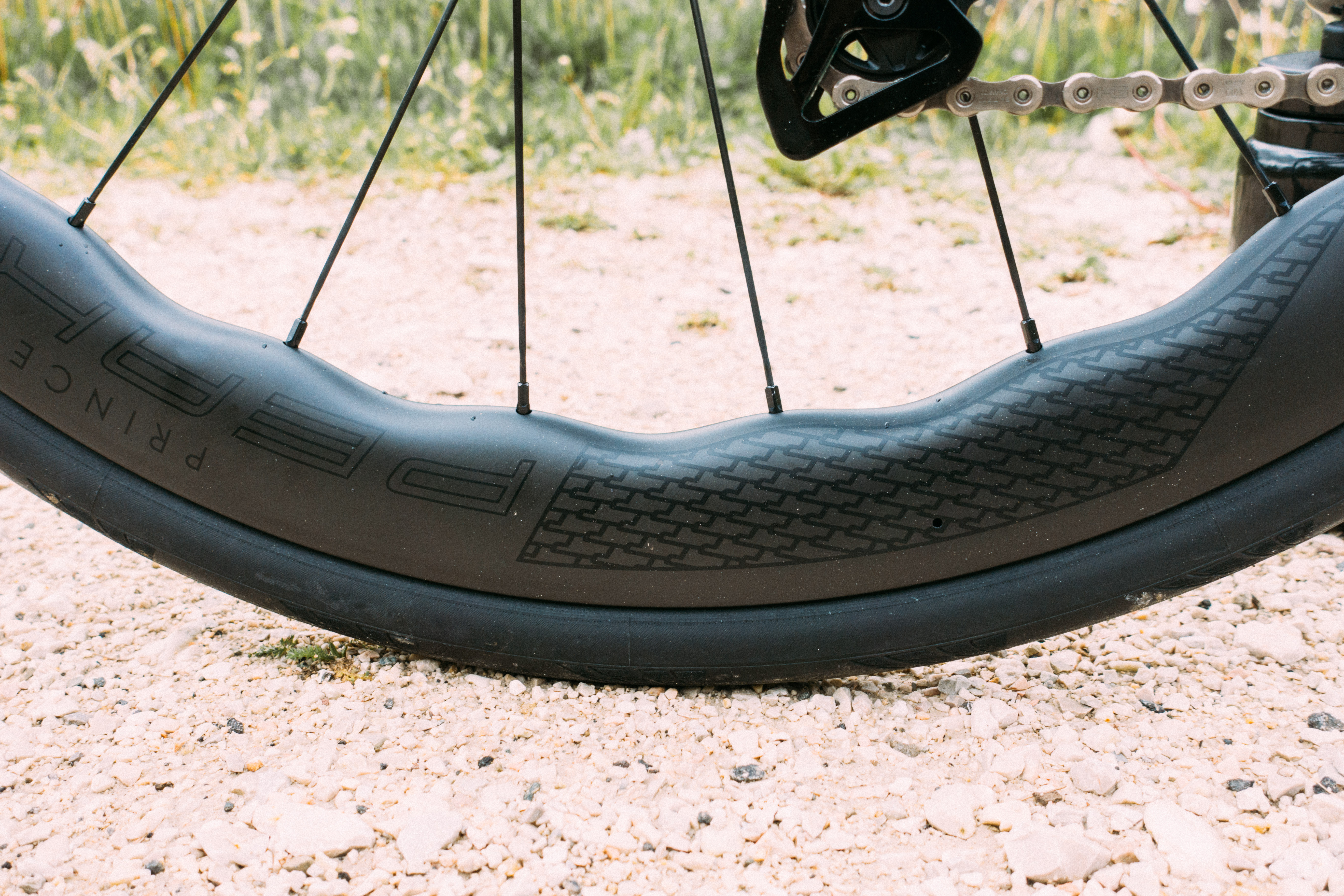
The build
Bike launches are always awash with top-spec bikes, but the new Dogma F only really comes in top-spec builds. Dura-Ace, Red, or Super Record Wireless are your only options. My test unit was fitted with Shimano Dura-Ace, the new Talon Ultra Fast cockpit (more on that later), and Princeton Peak 4550 wheels, which were laced up to White Industries hubs.
The tyres were provided by Continental in the form of the excellent GP5000S TR, set up tubeless, and were initially pumped up to an incredibly Italian pressure which I then let out to something more befitting of the width, road surface, and the torrential rain.
Truly a status bike as well as a performance machine. Besides the colour, and the compact chainset, it’s basically as an Ineos team bike would be set up.

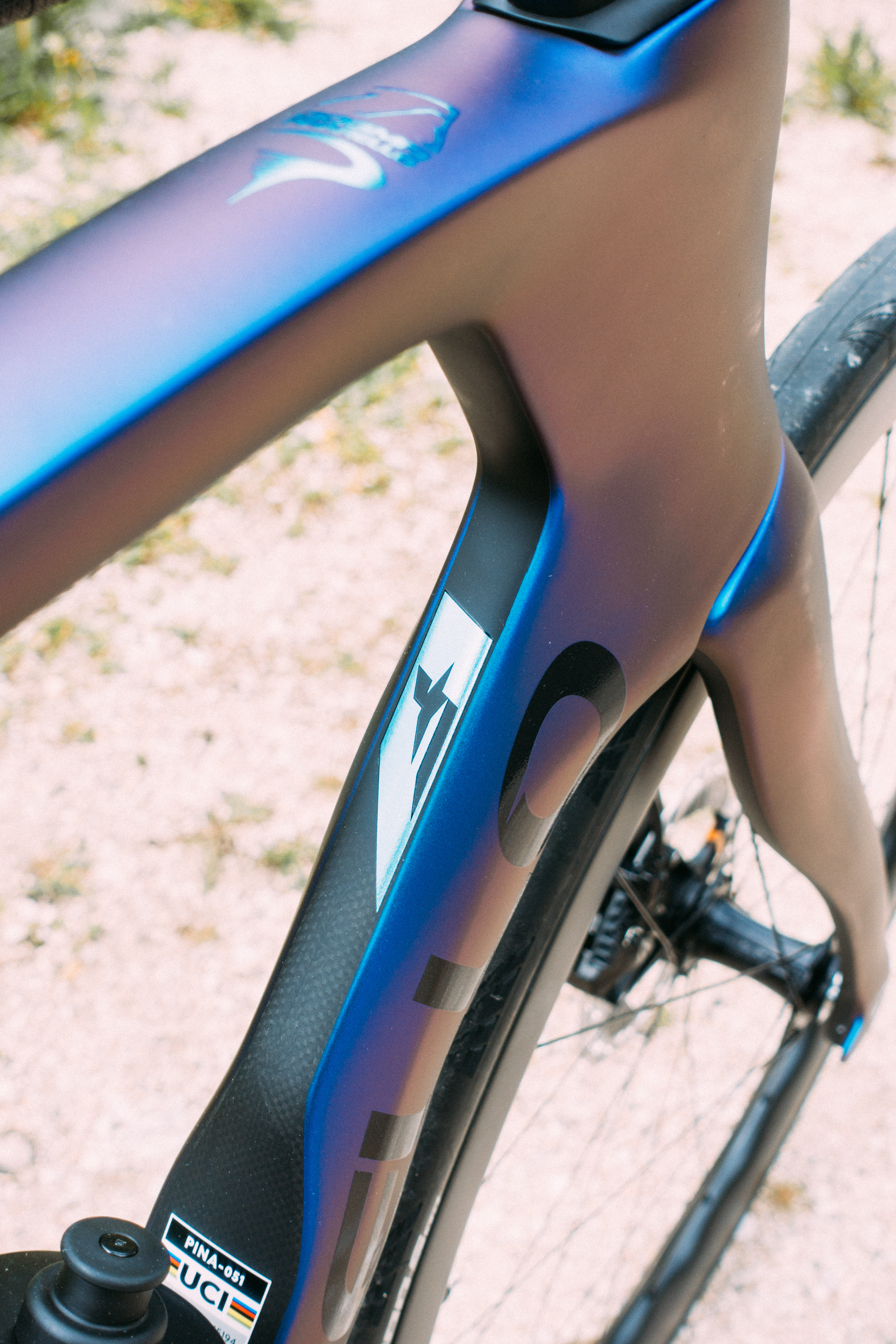
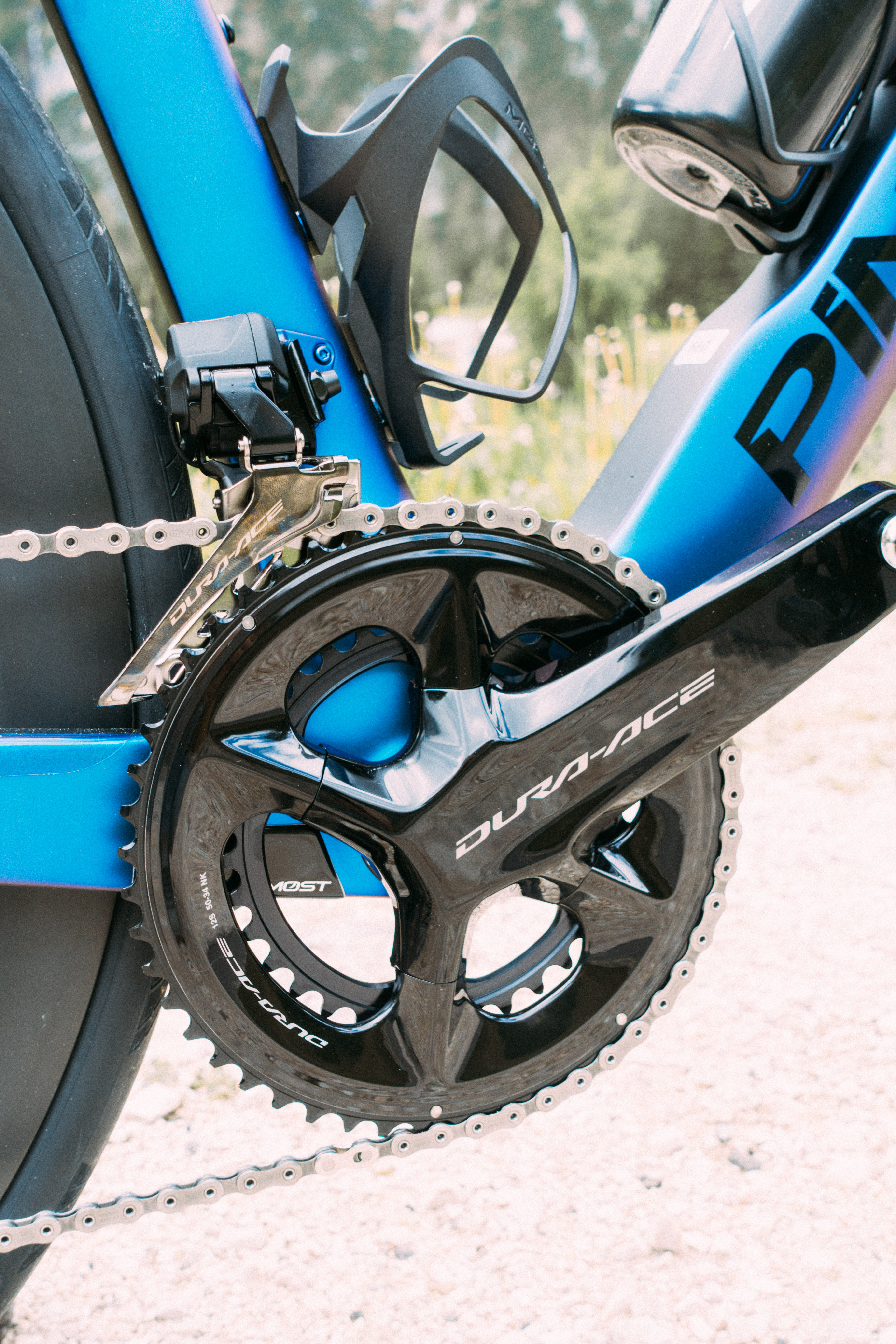
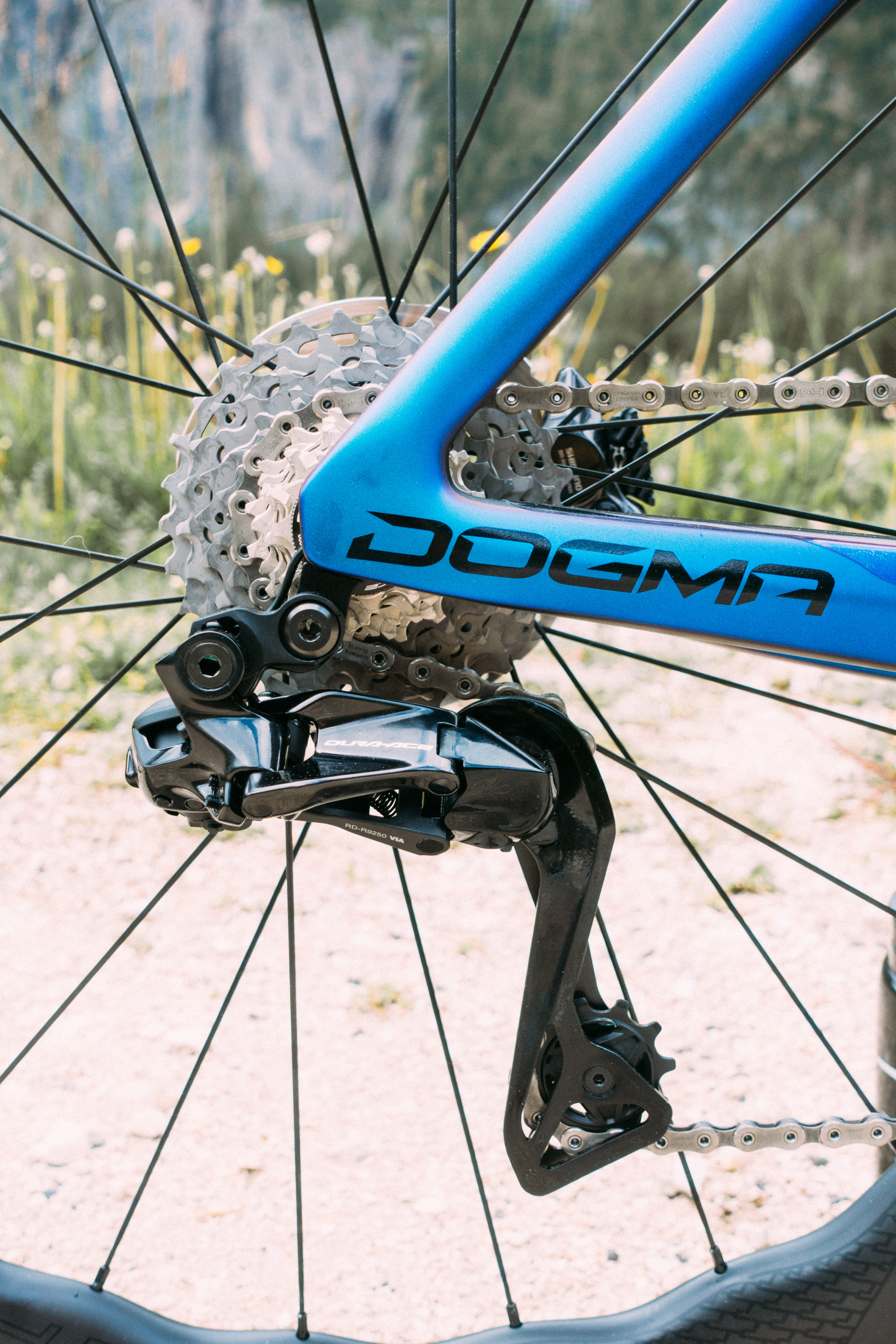
The route
Normally press trip routes are moderately challenging. Not so hard that anyone feels totally dead by the end, but not so easy that you feel like you haven’t pushed the bike. For this launch the bicycle and bicycle-adjacent press had been gathered in Alta Badia in the Dolomites, and everyone was more or less left to their own devices on the route, which I rather liked.
A 50km mountainous loop with 1,600m of climbing, delivered in four sustained climbs - with subsequently ripping descents - was challenging enough. Chuck in the fact it was absolutely torrential rain and it was certainly a test of both bike and rider. Hairpins a-plenty, with varying surfaces.
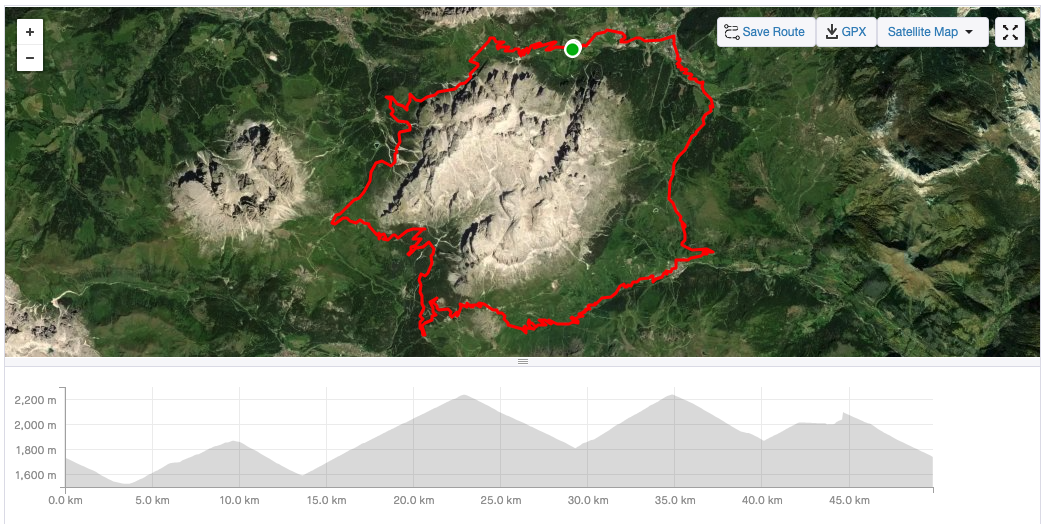
First impressions
Right, let’s be clear, this is a very very good bike. Having ridden more or less the full suite of Italian superbikes at this point (Colnago V4Rs, Bianchi Specialissima, Basso Diamante SV, Colnago C68) it is, in terms of absolute performance, a cut above the others. The Specialissima runs it close, but they are different propositions.
To start with what stood out, the handling is utterly sublime. The Bianchi Specilissima felt a little jittery by comparison, and the V4Rs with its longer wheelbase and slacker front felt rather pedestrian. The way it turned into corners was miraculous, especially considering the descents were both pitted and cracked, and often covered with running water.
I never rode the old Dogma, and while the geometry changes have been minimal I suspect the addition of a fork with a slightly longer rake (47mm up from 43mm), plus the wider tyres are only going to have helped. Rapid and responsive but never unstable, even at warp speed. I often found myself turning into a hairpin, and halfway through feeling confident enough to tighten the line mid-turn, such was the cornering prowess.
As well as being brilliantly balanced, the overriding impression was one of smoothness. The Specialissima particularly had this razor’s edge ping about it, while in contrast, the Dogma was pretty serene. Silent, no chatter. Even the White Industries freehub was very quiet, which I’m always a fan of, and while the noise doesn’t really do much to affect performance, it does add another layer to the air of composure that exudes from the bike.
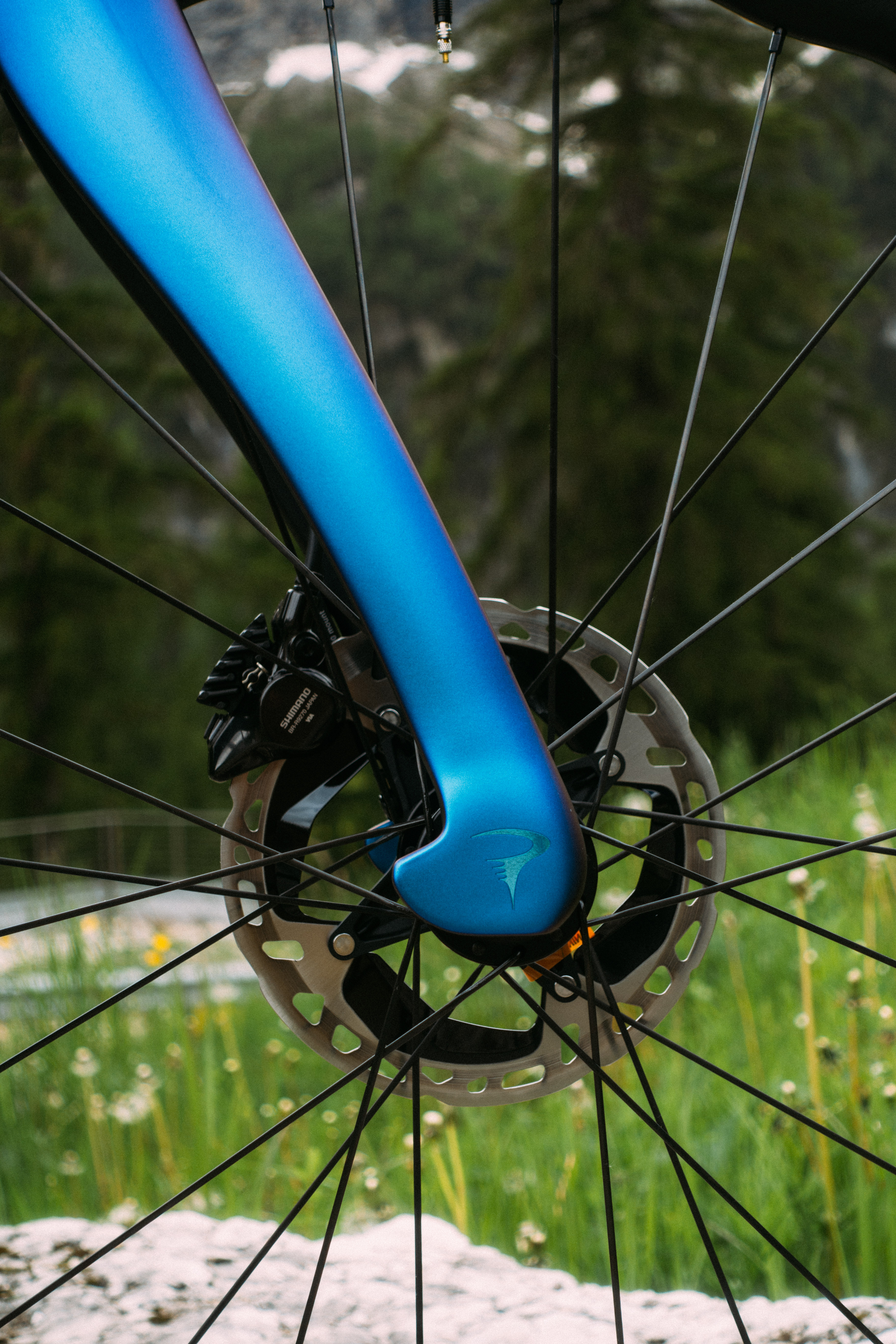
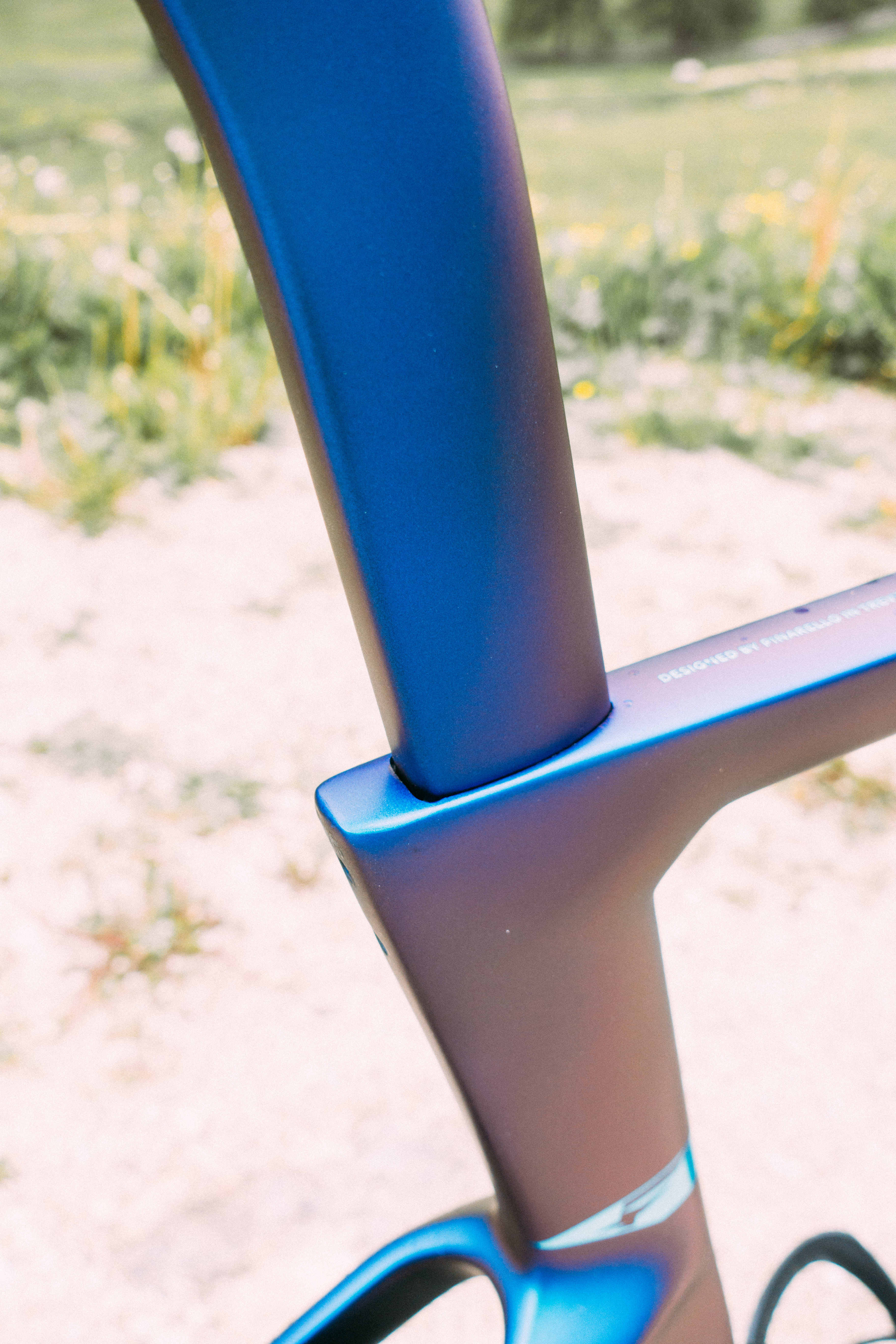
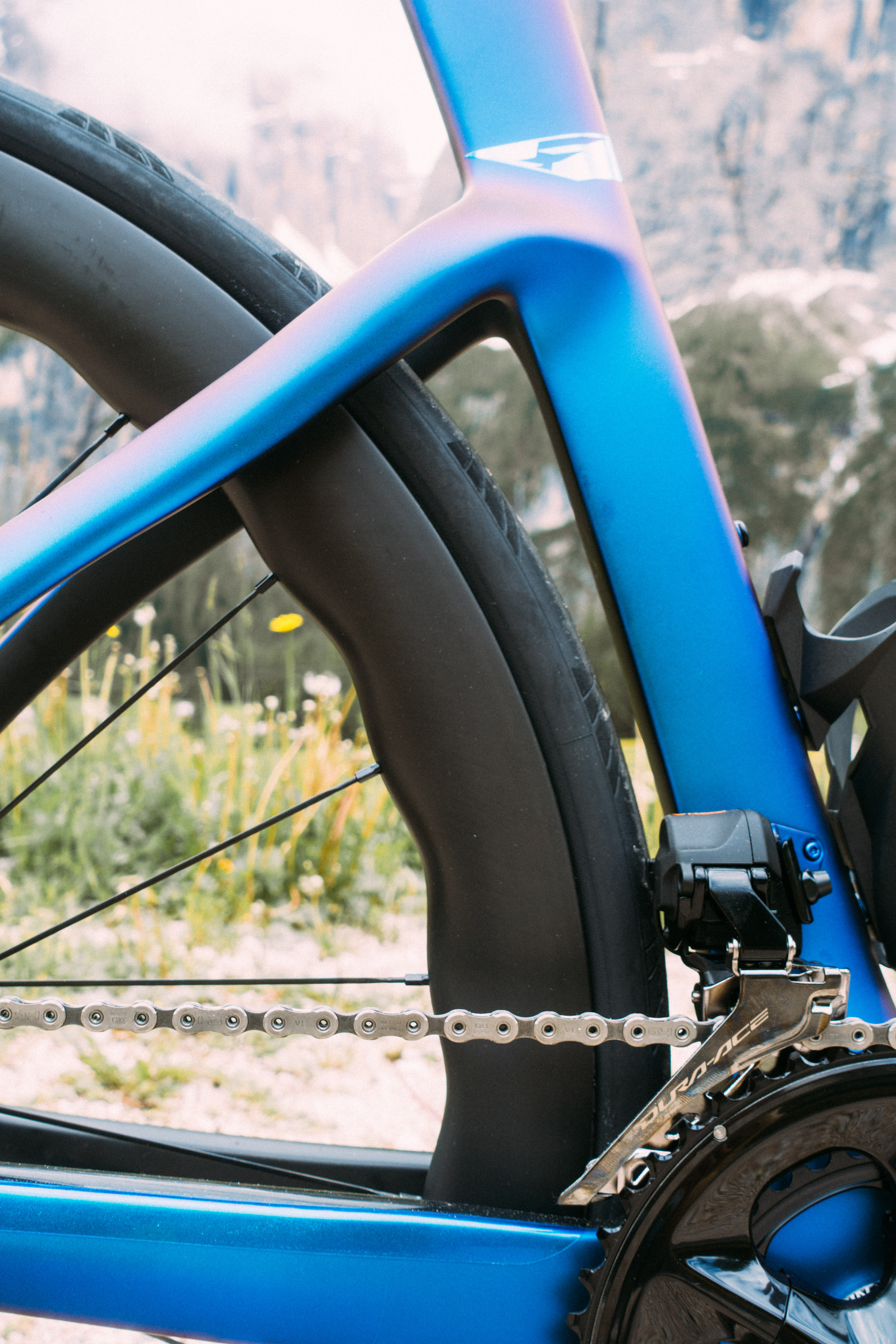
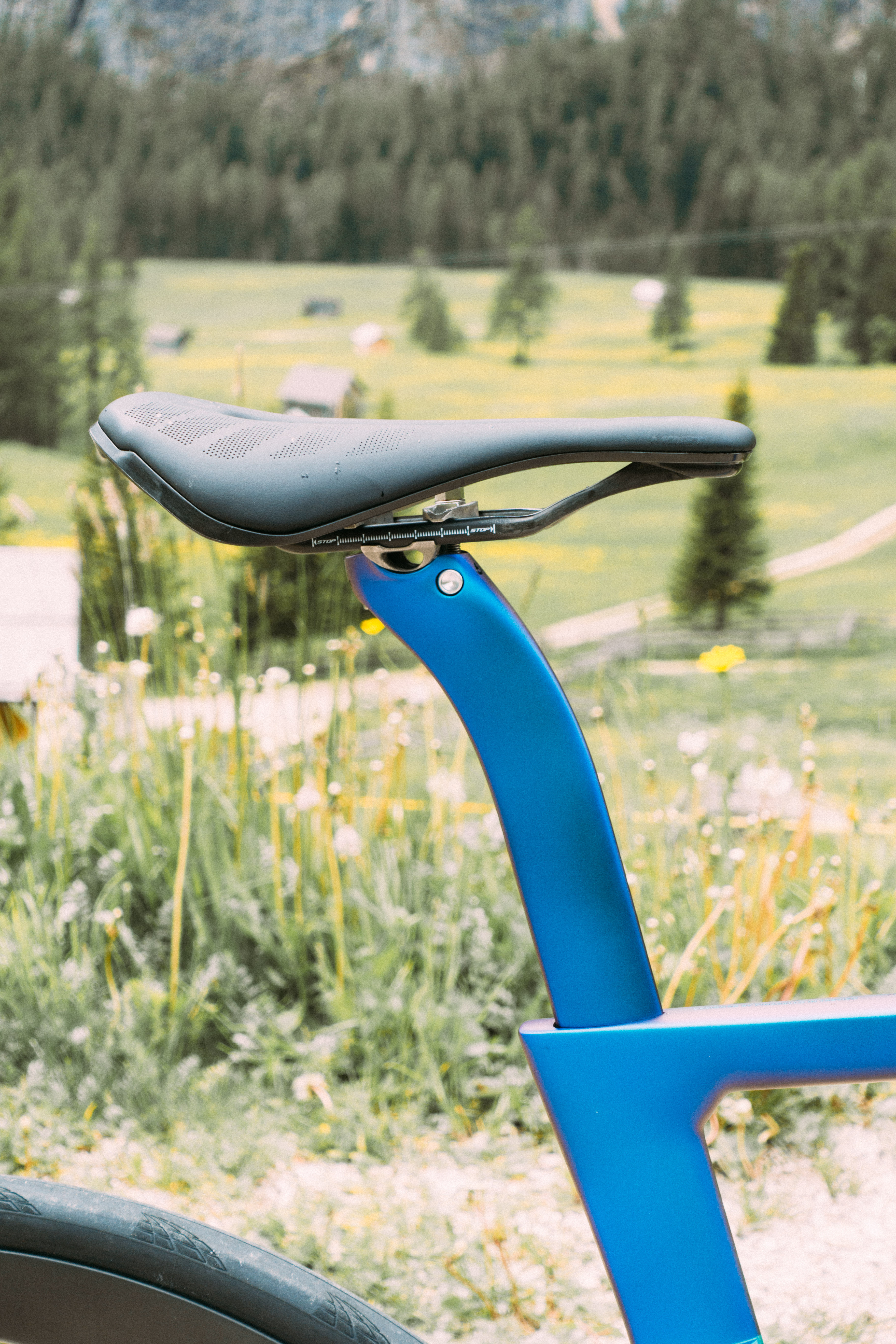
When heading uphill things are pretty exceptional too. The snap of acceleration is such that I often found myself in one or two gears too easy when shifting before getting out of the saddle. Many of my colleagues commented that they found the bike flip-flopped side to side more easily than they were used to, but I believe this is because most of the test bikes were fitted with narrower bars than is normal. To me, it didn’t feel anything out of the ordinary compared to the bikes I run day to day with 38cm bars or narrower, and was just a less exaggerated effect than what I found when running the rather extreme 22cm Lambda crosswing bars.
One thing that definitely will differ to the Ineos setup is the chainset. All of the Dura-Ace equipped test bikes came fitted with a 50/34 compact chainset, and while the 34t came in handy on the long climbs at altitude, the 50t was insufficient for the descents. I’m not blind to the fact that this bike may be bought as much as a status symbol as a performance machine, but if you are relatively fast you’re going to find the chainset wanting to be swapped. Maybe just buy it as it comes, take the compact off, and keep it in a box for those cycling holidays where the routes are often far hillier than the norm.
Tyre clearance
Speaking with the head of R&D, as well as what came across in the initial presentation, the key thing to note with the Dogma F is that it's very much designed for the Ineos riders. While many new bikes are coming with space for 32c or even 34c, the decision to stick with a maximum of 30c was down to the fact that’s what the team would use as a top end. Any wider would have meant a reduction in bottom bracket stiffness, and while I haven't been able to back to back against the old model, the new Dogma F is clearly extremely stiff. The bottom bracket is pretty enormous, especially with the 'aero-keel', and power transfer is as close to a zero-loss as I've ever felt.
But what about Roubaix? Well that was on my mind too, but the answer was clear: Roubaix is a single race, and not worth sacrificing performance across the whole season for. Ineos Grenadiers ran 32c tyres on the old Dogma F, which claims a max clearance of 28mm, so they'll presumably continue to do that on the new bike too.

Aero gains
Pinarello claims an improvement of 0.2% in terms of the coefficient of drag. That is, I'm afraid, basically negligible. To put it into context swapping from the fastest to the second fastest helmet in our wind tunnel test resulted in an difference of 0.6%, and would net you a 7 second gain over a 40km time trial.
A 0.2% improvement, of you ignore the rider position and just take the bike, would gain you 2 seconds over a 40km time trial, riding at 250 watts. Or, if you could remove the rider from the equation entirely (impossible, I know, but for the sake of the maths), the new bike would require 82.14 watts to hold 40km/h, as opposed to 82.3 watts for the old model.
This is so small a difference as to be pointless for all but the top-flight riders on the Ineos roster, who have likely exhausted all other wattage gains. For us mortals, aside from the weight saving, it's basically just as fast as the old one.
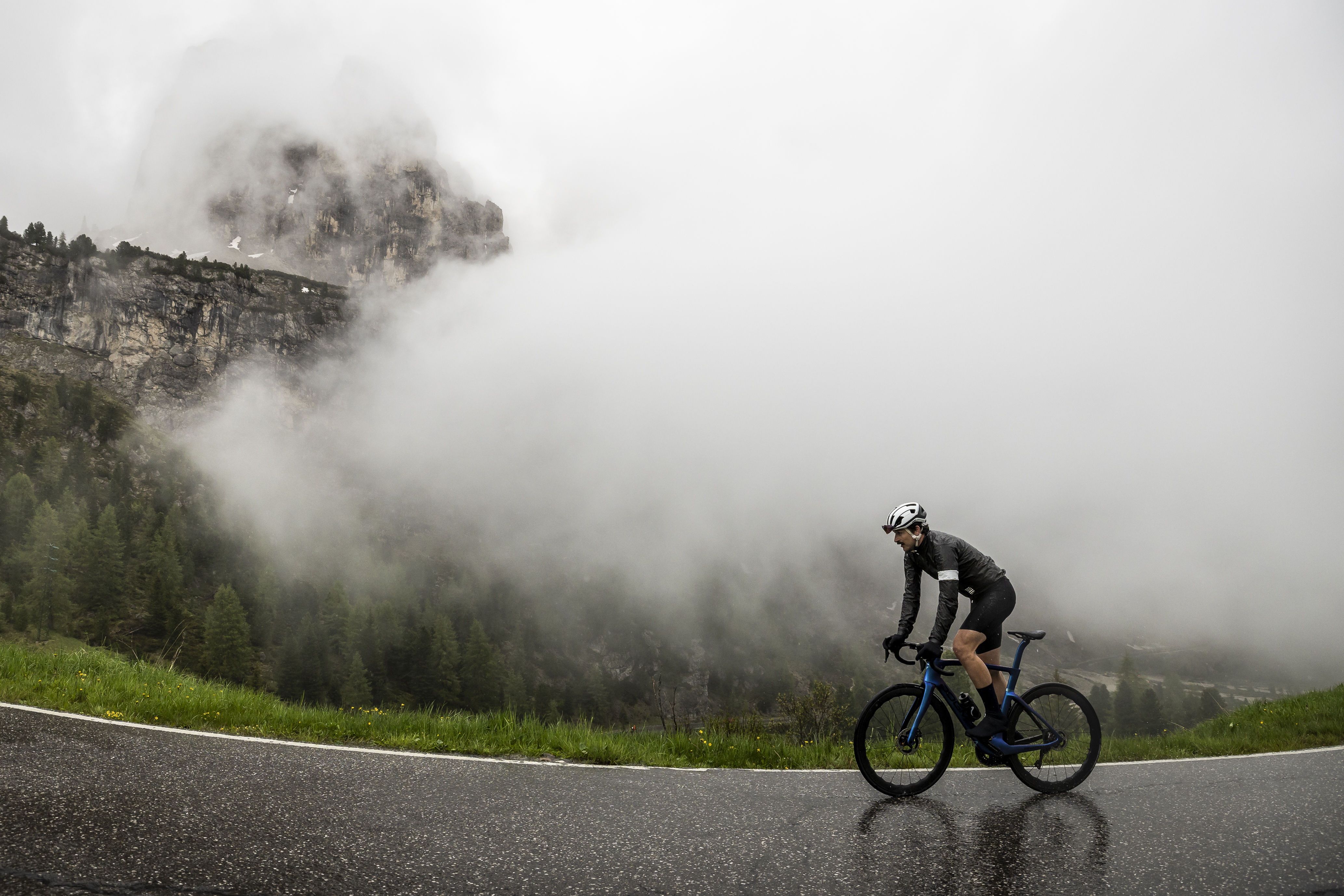
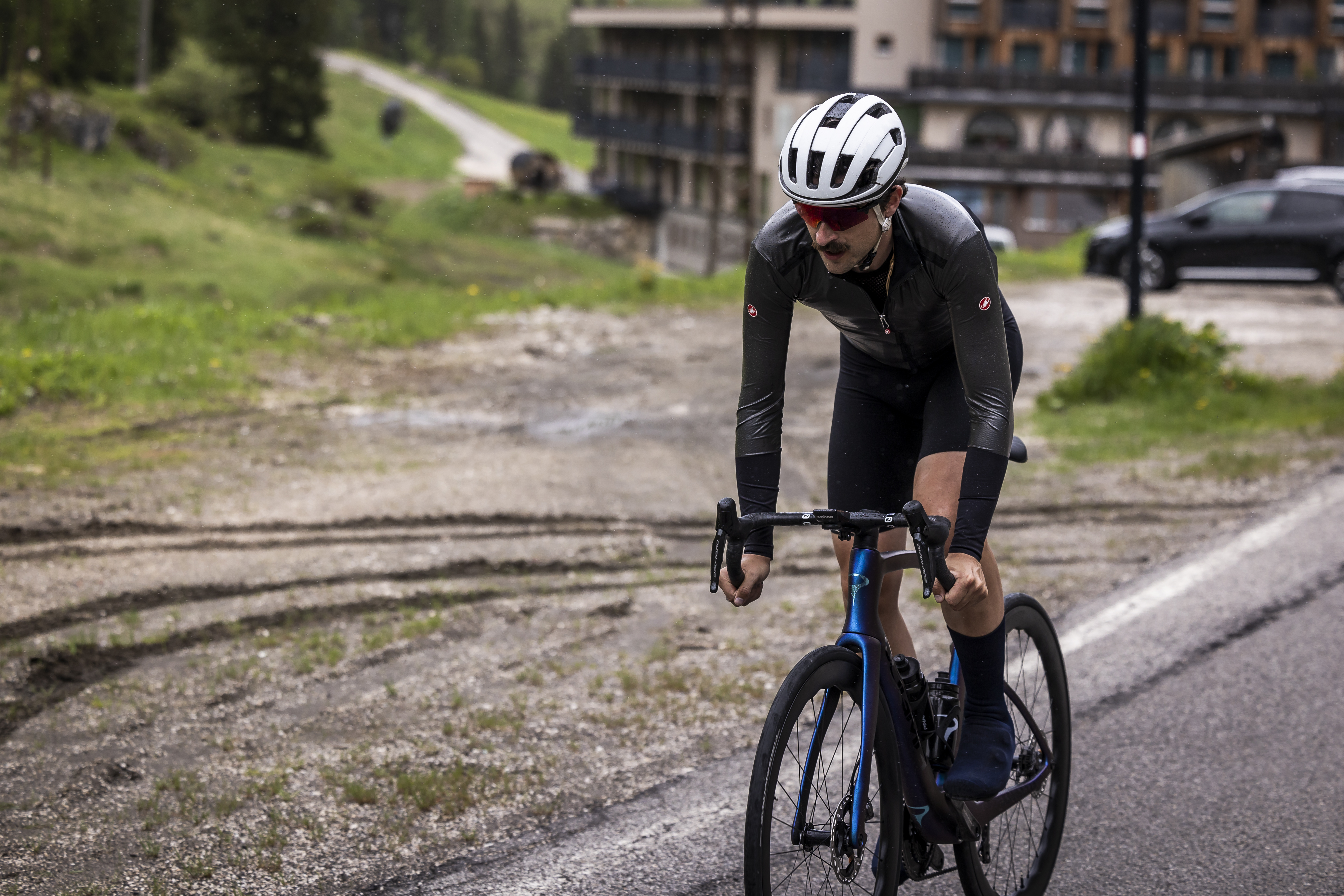
Cockpit
Back into more tangible things, the new Talon cockpit is mostly lovely. It comes in a great variety of widths and reaches, and the tops especially have been slimmed down so riding on them (as I tend to while climbing) is much more pleasant.
The flare is noticeable, and to my tastes, it's perhaps a little too flared, but I suspect I'm in the minority. The drops have a little flex to them that I also found on the cockpit of the F7, and while it wasn't terrible it was noticeable when out of the saddle.
The fact that the cockpit is pretty good is noteworthy because, thanks to a new ovalised steerer tube designed to improve cable routing, you can’t run anything else.
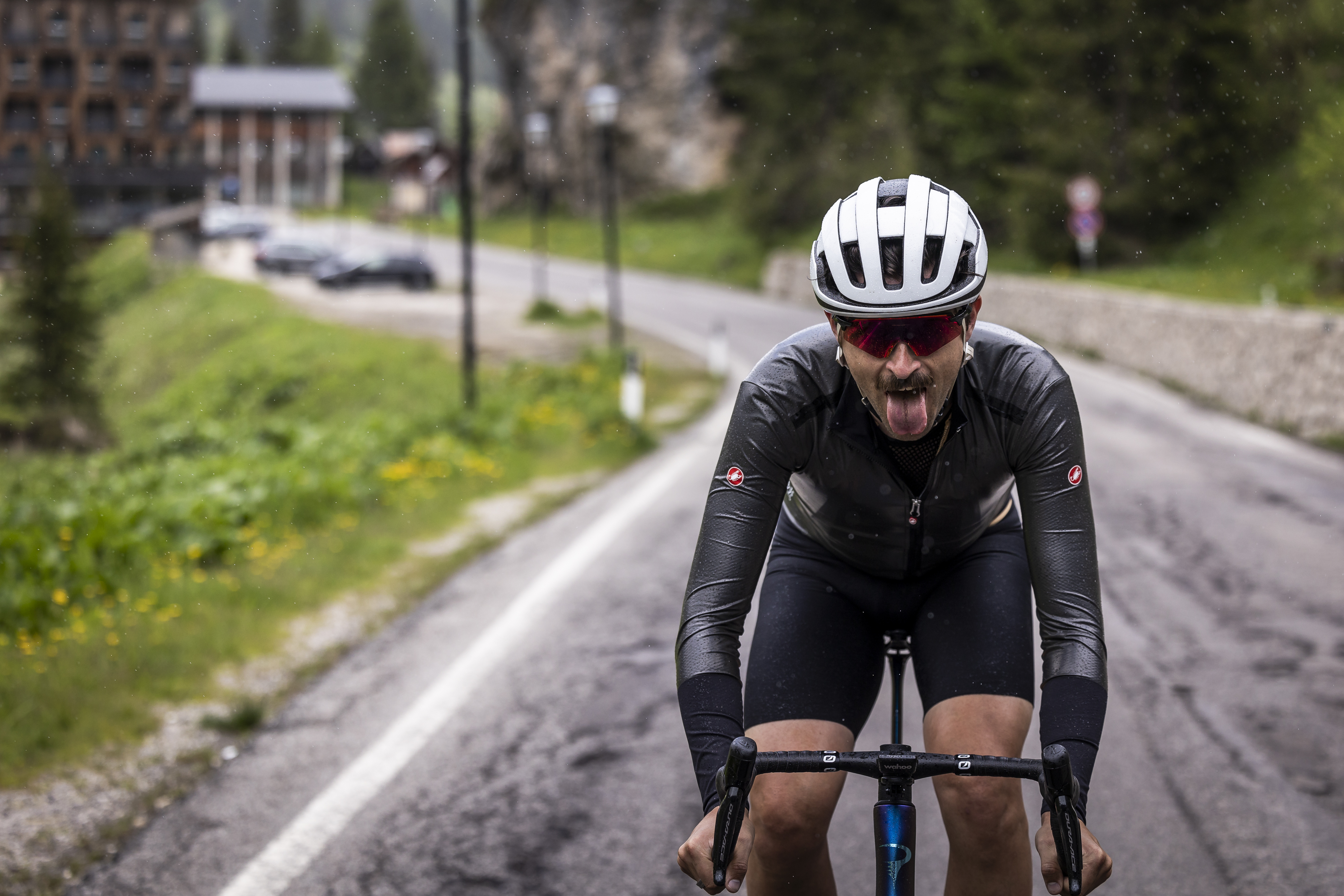

Initial verdict
The new Pinarello Dogma F is a superbike of the highest order. It climbs brilliantly, it looks gorgeous, and where it really stands out is in its utterly sublime handling characteristics.
What I can't quite shake is the feeling that the gains are a little too marginal. A gain of 108g, half of which is from the cockpit, is not exactly earth-shattering, and the aero improvements are so marginal I do wonder if the brand is perhaps being held back by its commitment to aesthetics. When you have a bike that is as much a status symbol as a performance machine it seems a permanent middle ground has been reached, with the designers and aero technicians dug into their respective trenches for the long haul. A while back I suggested that pro cycling needs pro-only bikes, and this does somewhat add grist to that particular mill I think.
The fact that it hasn't changed much doesn't make it bad, it's very very good, and without riding the old one I cannot say for sure, but my feeling is it's not much of an upgrade on the old one. If you're coming to it afresh then you won't be disappointed, but my advice is don't rush out to flog your old Dogma F on eBay.







